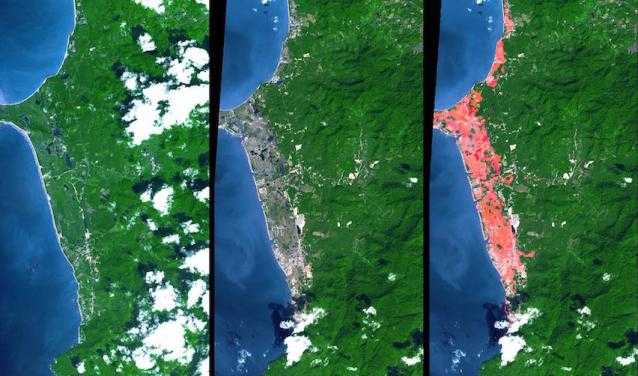Home>“There is no such thing as a purely natural disaster”

06.05.2015
“There is no such thing as a purely natural disaster”
We met Sandine Revet on the release of her new book, “Governing Disasters. Beyond Risk Culture,” which she co-edited with Julien Langumier for Palgrave. She is an anthropologist and has been a senior researcher at CERI since 2009. Revet had a leading role in this collaboration and it was first published in France in 2013 by Karthala. She focuses on the reality and challenges that come with the study of the 'government of disaster'.
- How you explain the idea of the 'government of disaster'?
The idea of the 'government of disaster' comes from a seminar called "Disaster, Risks and Social Sciences" with CERI’s Julien Langumier that took place between 2010 and 2012. We noted that there is a whole array of measures that are set up in the aftermath of a disaster. We looked at how these measures are designed, how they’re deployed and how people take them over by force, modify them and are in turn affected by these new practices. What sets this study apart is its empirical element, as all the authors have worked from field surveys.
The theme of 'government of disaster' can cover a wide range of things including how the existing laws are carried out, emergency decrees and good practice guides, as well as more intimate things such as memory. And it can concern very many actors, whether international actors, humanitarian actors or even local authorities.
- What specific roles does the anthropologist play in studying 'government of disaster' compared to other actors?
I study the long term effects of disasters. This can be in the present but also by looking at their roots and history. I also look at the reconstruction efforts. The media reports a stark picture of catastrophes, but they are there in the heat of the moment. There is further vulnerability down the line that we do not get to see. What happens next is invisible. When you look at it more closely you see that societies reform rather quickly but the media is not there to see it. As for us, we stay on and that’s what differentiates us from the rest.
My method is ethnography. It’s been 6 years since I started working with those involved in 'government of disaster,' both in international organisations in Geneva and in their projects in Latin America. I’ve travelled with them. I study their aspirations, the evolution of their daily lives. I look at how they circulate their tools and ideas. Ideas take on arms and legs of their own, they are deployed. I am those ideas.
I focus on international actors in particular, but also on governments and NGOS.However, I do not study the sociology of organisations or the public policies being enacted. What interests me is the way in which these measures affect those directly involved.
- What disasters are of particular interest to you?
I work on “natural” disasters. I am using quotation marks here because there is no such thing as a purely natural disaster. A disaster that has natural origins always arises in conjunction with other social conditions.
In the book Governing Disasters we did not confine ourselves to “natural” disasters but tried to widen our scope to cover other types of disaster. For example, we worked on a case of technological disaster (Seveso), on a pandemic (SARS) and even on the Rhone floodings and on the tsunami in Sri Lanka. We are interested in how the actors themselves define a disaster, why they define it like that and how they will respond.
- Governing Disasters tells of the many difficulties faced by the researcher after a disaster. Why?
One of the main points of the book is reflexivity, which is about acknowledging how the presence of researchers on the ground can impact on the research itself. It’s important to include our hopes and fears, our projections and how they have been disrupted by being in the field. This is why we asked the authors of the book to take the time to think about this in their contributions.
It’s always difficult to find your place among a plethora of different actors, be they humanitarian, political or in the media. People are thrown into a bunch of strangers who are suddenly interested in them. But you should know that I do not go into a disaster zone while it’s taking place. Moreover, the actors I currently observe are those that intervene in the catastrophe rather than those that directly suffered as a result of it.
- How does your research impact on public actors when they have to respond to a disaster?
We address those actors in 'government of disaster', for example students in humanitarianism or local authorities. Our work can act as a mirror for them. It’s a very good thing that our work has been translated into English, thanks to an agreement between Karthala and Palgrave, because that allows us to reach readers across the entire world.
However, the social sciences are not being taken over systematically by the political actors, especially because of the timescale issue. They demand quick answers from us but our research takes time.
We must see our research as a body of work that blends political measures that are more and more diplomatic. If we look from the 1970s onwards we can see how the 'government of disaster' has unfolded, we see it going from being purely technical to it being impregnated by the social sciences. This leads us to being optimistic in the long term.